Jacob S Paulsen's Blog, page 4
April 13, 2022
New York Times: Angry Drivers, Lots of Guns: An Explosion in Road Rage Shootings
The post New York Times: Angry Drivers, Lots of Guns: An Explosion in Road Rage Shootings first appeared on Jacob S. Paulsen.com.





March 9, 2022
CCW SAFE PODCAST- EPISODE 85: JACOB PAULSEN OF CONCEALEDCARRY.COM
The post CCW SAFE PODCAST- EPISODE 85: JACOB PAULSEN OF CONCEALEDCARRY.COM first appeared on Jacob S. Paulsen.com.





March 4, 2022
Why Retail Isn’t Dead and How the Firearm Industry Is Especially Resilient
I'm a product of the internet marketing industry. In 2007 I built my first website and read “SEO For Dummies.” In 2010 I boarded 99 airplanes traveling the country and helping traditional media companies adapt to and sell online advertising.
Today, I operate an eCommerce business, manage about 20 websites, operate my own email marketing server, and consider myself an internet marketing professional. If anyone is on board with the digital revolution, it is me and almost every dime I've made in my adult life can be tied to digital advertising or online sales.
That said, I've recently been pondering on the survival and ongoing promise that retail presents to the greater world of business and commerce.
Online Will Continue To Grow and DominateSince the emergence of eCommerce the experts have been telling us that retail won't go away. Consumers still appreciate the experience of touching and trying products before buying them and shopping is for many a social activity.
Almost every promise made by experts 1 and 2 decades ago has been proven wrong. People will buy clothes and shoes online without fear of getting the wrong size and consumers will happily let someone else pick out all their groceries so they can simply load them up in the car or even pay to have them delivered to the front porch.
CODID-19 has been perhaps the greatest thing to dramatically push online sales even farther and faster than ever before. In 2020, consumers in the US spent $762.68 billion online, up by 27.5% from the $598.02 billion in 2019. This makes sense as consumers were encouraged to stay home and not venture out of the house. That year-over-year increase was the largest in at least 2 decades.
The following year, in 2021, we still saw 14.2% growth with online sales increasing to $870.78 billion in the US.
!function(e,i,n,s){var t="InfogramEmbeds",d=e.getElementsByTagName("script")[0];if(window[t]&&window[t].initialized)window[t].process&&window[t].process();else if(!e.getElementById(n)){var o=e.createElement("script");o.async=1,o.id=n,o.src="https://e.infogram.com/js/dist/embed-...
In short, there is no doubt that online sales are continuing to grow. There is no limit to what people will buy online. A house, a car, investments, clothing, a gun, and everything else is on the table.
Despite All That Retail Isn't Going Away SoonFrom the above chart, you will also note that retail also saw a resurgence in 2021 as America returned to the streets with 14% growth which is ironically the same percentage of growth that eCommerce saw in the same period.
Perhaps an even more important perspective is to note that in 2021 retail still represents a huge majority of the money being spent by Americans despite the doomsday impression created by the recent death of brands such as Blockbuster Video, Toys R Us, Borders Books, RadioShack, Payless Shoes, Sports Authority, and Sears.
!function(e,i,n,s){var t="InfogramEmbeds",d=e.getElementsByTagName("script")[0];if(window[t]&&window[t].initialized)window[t].process&&window[t].process();else if(!e.getElementById(n)){var o=e.createElement("script");o.async=1,o.id=n,o.src="https://e.infogram.com/js/dist/embed-...
In 2020 and 2021, eCommerce represented 19.1% of total spending in the US which is at an all-time high but still means over 80% of sales were OFFLINE.
I don't know what things will look like in 20 years, but certainly, those who predicted back in 2005 that 20 years later we would see 80% of sales happening online will be proven wrong. That isn't going to happen, at least not that soon.
Reasons Why The Gun Industry Has A Very Bright Retail FutureI operate in the US firearms industry. While I don't sell guns or ammunition the gun industry is currently where I operate and represents the target demographic of most or all of my products. As you will see below, I feel the firearms industry is very unique in this conversation about retail vs eCommerce.
Here are 4 considerations that are relatively unique to the gun industry that I feel will strengthen retail businesses and make them more resilient to the erosion caused by the continued growth of eCommerce.
Service providers block the businessOne challenge that will prevent or slow the adoption of eCommerce in the gun industry is the lack of online service providers that support the industry. A large number of the biggest merchant websites, credit card processing providers, shopping cart software developers, and web hosts refuse to work with companies who sell guns or ammo, and a surprising number won't work with other companies in the gun industry despite them NOT selling guns or ammo.
Consider Amazon for example. Amazon.com accounted for more than 40% of all U.S. eCommerce in 2021. However, despite being the 800 lb gorilla online, you can't buy a gun, ammunition, or anything that could be used with or on an AR-15 from Amazon.com.
Amazon isn't alone. Consider that gun sellers or manufacturers can't run advertising on the top two marketplaces of advertising in the US: Google and Facebook.
I'm not suggesting that the gun industry won't maximize its ability to conduct and grow business online. I'm suggesting that the barriers to doing business online will contribute to the firearm industry's reliance on retail sales.
Even online sales require a brick and mortar storeYou might be thinking right now that you hear all the time about people buying and selling guns online. It is true that a transaction or sale of a gun can be conducted online between two parties, but consider that the buyer can only take possession in person from a licensed gun dealer.

You might be thinking right now that you hear all the time about people buying and selling guns online. It is true that a transaction or sale of a gun can be conducted online between two parties, but consider that the buyer can only take possession in-person from a licensed gun dealer.
There are exceptions in many states for private sales between two individuals, but that still represents an in-person transaction. Thus, effectively no legal online gun transaction is completed without an in-person meeting of which the vast majority happen at a retail gun store.
There is a current movement to pass what is generally known as “Universal Background Check” laws which prohibit private party sales/transfers. These laws, which I consider an infringement of our constitutional rights, already exist in many states but if such a law is passed at the federal level, the already very high percentage of legal gun sales that are finalized in a gun store will increase to an even higher percentage.
Can you think of another industry where an online transaction of the product requires the existence of a physical retail store in order for the transaction to be finalized?
Use the product where you bought itThe gun industry is also unique in the reality that a large number of consumers are effectively limited to using the purchased product at the store where they bought it.
Laws vary from jurisdiction-to-jurisdiction about where one can shoot guns, and a large number of Americans have fast and easy access to public or private land where they can enjoy the competitive or recreational shooting of firearms.
However, both because the weather doesn't always cooperate and because a lot of Americans live in densely populated areas, the indoor gun range is often the only viable place to enjoy a gun.
Obviously, not all gun stores also have a shooting range but many do, and it is hard to imagine the death of gun ranges and thus the retail operations connected to those ranges will continue to prosper.
How many other industries can you think of in which a large number of consumers can only use the product by returning to the place they bought it?
Regulation Will Continue to Force Buyers to Buy In PersonIt is worth considering that many states have laws that prohibit the online purchase and/or delivery of guns, ammunition, knives, pepper spray, and body armor. I'm no expert, but my limited research identified 5 states that effectively require a purchase of ammunition to be finalized or made at a retail store or authorized dealer due to regulation.
Certainly, in those states, it would be more difficult to drive online sales of restricted products, and as such, retail stores will be even less likely to benefit from the growth of eCommerce.
While these restrictions present an obvious infringement on the second amendment of the US constitution sadly I don’t see them going away and in fact, I think it likely we see more restrictions on the online sales of ammunition and firearms.
Online Sales Are The Future But Don't Ignore RetailFor me and my business, our conclusion is that while we need to continue to focus on online sales we also shouldn't be ignoring retail opportunities. Retail distribution is still the key to the success of any significant company in almost any industry and the firearm industry is no different.
The post Why Retail Isn’t Dead and How the Firearm Industry Is Especially Resilient first appeared on Jacob S. Paulsen.com.





March 2, 2022
The Three Tiers of Providers As It Relates to The Firearm Industry
As a business owner in the firearm industry, I have the task of navigating service providers as it relates to their company policies on firearms and weapons.
This often means we may not be able to do business with or work with service providers because they have decided our association with the firearm industry makes us toxic. And working with us, despite our business being fully legal, may cause them social harm or liability they want to avoid.
In helping other business owners navigate this complex problem I've found the easiest way to simplify what might otherwise seem like a complex issue is to group these service providers into 3 groups.
These 3 buckets, categories, or tiers as I prefer, are groups of providers that share similar policies relating to working with firearm-related companies.
Please do not mistake this as an article about companies that are anti or pro-gun. That is a conversation that generally revolves around retail operations and the policies they have relating to bringing a firearm onto their property or into their store/restaurant/theater/establishment. This has nothing to do with that.
What Kinds of Service Providers Are We Talking About?Any modern business is going to have a need to contract with and hire other companies. It is those service providers that we are exploring in this article.
Examples may include website hosting services, merchant providers, email marketing services, software providers, accounting services, publishers (specifically those that sell advertising), online marketplaces (like eBay or Amazon), banks, and lenders.
Who is a Tier 1 Provider?
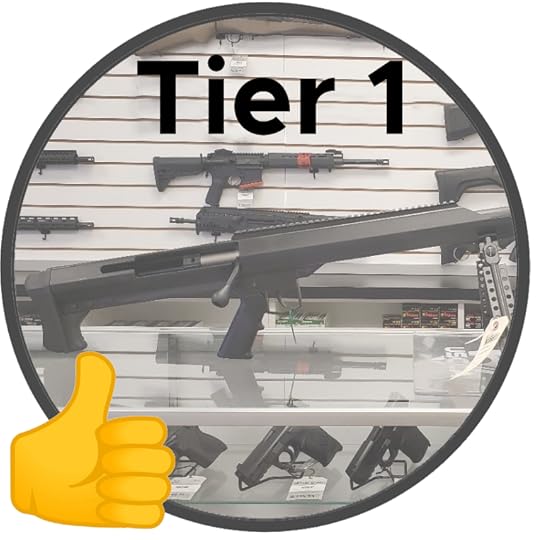
I group together companies into Tier 1 that are completely firearm friendly. These are often companies that exist specifically to tailor to the firearm industry and have no conflict at all with working with gun stores, knife manufacturers, etc.
I call them Tier 1 because in an ideal world we would work exclusively with these companies because they support our Second Amendment rights and the firearm business industry, and by supporting them we strengthen the industry as a whole and encourage more companies to have Tier 1 policies.
The bad news is that Tier 1 providers are almost always more expensive. They serve a niche market, so they tend to get less business volume overall, and as such, they charge a premium for their services. If you are an FFL and sell guns and/or ammo you will almost certainly be restricted to working with Tier 1 companies.
Also, consider that businesses have a need to reduce their own liability and protect themselves, and to do so in our industry, unfortunately, means buying expensive insurance which means charging more for their product so they can afford that insurance.
This tends to lead to an environment where a lot of firearm-related businesses who can get away with it end up working with Tier 2 providers where they can.
Who is a Tier 2 Provider?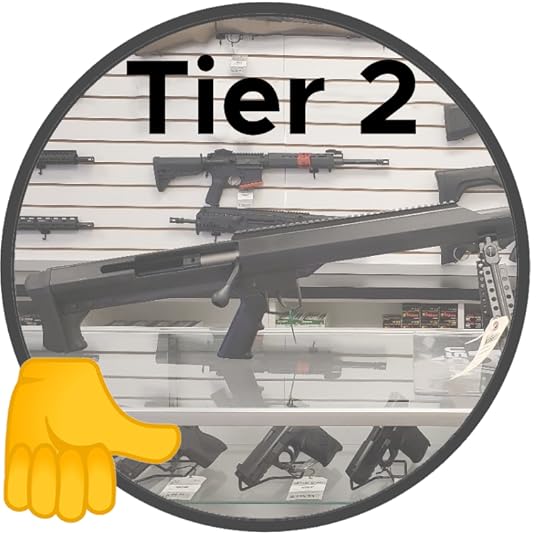 I group together companies into Tier 2 that have policies against some things related to firearms but not all things. This often takes the form of not doing business with an FFL (gun dealer) but doing business with a firearm instructor or a business that sells firearm accessories only.
I group together companies into Tier 2 that have policies against some things related to firearms but not all things. This often takes the form of not doing business with an FFL (gun dealer) but doing business with a firearm instructor or a business that sells firearm accessories only.
While Tier 2 companies all have slightly different policies, they are all roughly the same, too, which is why it is so easy to put them all in the same bucket. In short Tier 2 providers will not do business with someone who sells any of the following:
Firearms, ammunition, knives, tasers, pepper spray, brass knuckles, throwing stars, or anything else that could otherwise be interpreted to be a “weapon.”
That list is generic. There are going to be some Tier 2 companies on my list whose “naughty list” may not include one or more things mentioned above and/or who have a few other things on their naughty list that I've neglected but those are exceptions, not the rule.
The vast majority of companies are going to have policies that make them Tier 2 providers. Certainly, the largest and best-branded companies you have heard of are probably in this group. They don't want to say no to the industry as a whole, yet they want to avoid the products they consider most toxic or with the most potential liability in their perspective.
Who is a Tier 3 Provider?
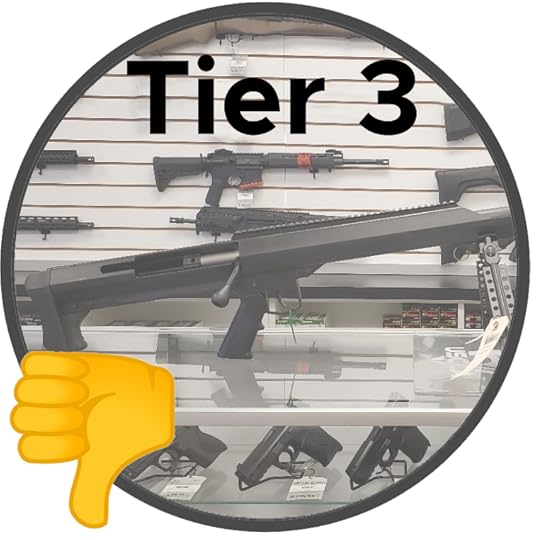
I group together companies into Tier 3 that outright refuse to do business with any company associated with the firearm industry.
Tier 3 companies don't care if the only thing you do as a company is selling gun safes to protect little children from guns, they still consider that a part of the firearm industry and want nothing to do with you.
These companies may have varying degrees of effectiveness in enforcing their policy but to do business with them means at any time they may discover “who you are” and cut you off for violating their policies or terms of service. It's a risk I don't recommend, and frankly is unnecessary.
Inconsistent Enforcement Is The WorstLast warning before you scroll down and start referencing companies I've cataloged for your convenience.
Not all companies are consistent in the enforcement of their policies. Certainly, there are those who profess to be Tier 3 providers but do business with plenty of firearm-related companies.
The opposite happens as well. There are companies who profess to be Tier 2 but then cut off or shut down companies who fully comply with the Tier 2 policies. Paypal is the example that comes to mind.
While I certainly think you should only work with providers whose policies you can perfectly comply with, you should also be wary of Tier 2 companies that seem to reach beyond their own policy and arbitrarily shut down customers who are fully compliant.
A Catalog for Your Convenience:Below I've attempted to add a list of companies organized by tier and then by business category. This is in no way complete but is limited by my own knowledge and experience. If you are aware of something I'm missing, please let me know in the comments and please provide proof or evidence. I will update this when I receive new information or am made aware of additions.
Tier 1 Providers:Banks: CCBank
Business Insurance: Joseph Chiarello & Co, Hobson Insurance, Specialty Insurance Consultants LLC, Breckenridge Insurance, Lockton Affinity, Outdoor Sports & Recreation Insurance (OSR), Sage Program Underwriters, XINSURANCE
Firearm Instructor Insurance: Firearm Trainers Association, Lockton Affinity
Merchant Provider: Electronic Transfer Inc, Payroc, Clearent, Revere Payments, Verde
Lender: SBA Loan Group
Tier 2 Providers:Advertising: Bing, Facebook, Google, Pinterest, Yahoo
Banks: Bank of America, CitiBank
Marketplaces: Amazon (note Amazon also prohibits anything that is associated with a carbine), eBay
Merchant Providers: PayPal, Stripe, Square
Web hosts: Amazon, Shopify, Square, Wix, WordPress.com (Please note WordPress.com is NOT the same as WordPress.org which is a self-hosted CMS)
Tier 3 Providers:Business Insurance: The Hartford
Lender: Funding Circle, Loanbuilder by Paypal
The post The Three Tiers of Providers As It Relates to The Firearm Industry first appeared on Jacob S. Paulsen.com.





December 31, 2021
If your house were about to burn down and you only had 5 minutes to grab something what would you grab?
It is an old exercise that I've seen a few times including in at least one major Hollywood movie. The idea is to force some inner analysis in thinking through what is really the most important in life.
Seems like a valuable exercise but like most things, the theoretical exercise never measures up to the real thing.
On December 30th, 2021 extreme winds (gusts over 100 mph) caused a power line to fall and start a brush fire in the Northwest corner of the Denver Colorado metro area. The town of Superior Colorado was immediately evacuated as the winds spread the fire and made it impossible to fight or stop.
Soon after the town of Louisville Colorado was also evacuated. Louisville has been featured in Money magazine, Family Circle magazine, and in the book “Best Places to Raise Your Family” as among the best cities in the country to live and raise a family.
At appx 5:30 pm my own subdivision was put on pre-evacuation notice. In case that isn't obvious the idea is that you pack a bag and cautiously await orders to evacuate. To avoid any potential concern on my behalf you should know that we were never asked to evacuate and the pre-evacuation notice was lifted before that night was over.
This created a unique moment in our family. One in which we didn't know how long it might be before we were asked to evacuate.
All-day we had been in the house hearing and feeling the force of extreme winds pounding on us. The winds were extreme enough to collapse a local tire store injuring six. We had every reason to believe that it was absolutely likely that the fire which was at the time destroying a Tesla dealership about 8 miles away could absolutely make its way to our neighborhood.
That old mental exercise got real, real fast. At the moment Ami and decided to prepare to leave I stood up from my computer and froze for a moment as I thought to myself… what do I grab?
It started with necessity. Naturally, without any real discussion, we all packed clothes to last a few days, food for the dogs, and our 72-hour emergency kits.
My entire life I've had a 72-hour emergency kit. When I was a young kid I remember family meetings in which we updated our kits and made sure all the contents were in good condition. As an adult, my wife and I have hosted similar family meetings and only last year we made significant changes to our kits. I've NEVER, before that night, grabbed my kit thinking I might need to use it.
After we grabbed the core essentials we started to work outward almost in a circle, packing some things that we could live without but it wouldn't be pleasant. Computers, favorite toys, and some food and water.
Eventually, you keep moving outward in this metaphorical circle. All guns in smaller quick access safes were transferred to the big fireproof safes, old photo albums were packed, sleeping bags were grabbed. Pictures and video are taken of the whole house to document for a potential insurance claim.
Then there comes a point where you just stop. You just look around and think that it doesn't matter anymore. The adrenaline wears off and you realize that at this point you either need to pack everything or nothing more.
My situation turned out to be nothing more than an inconvenience that led to us learning more about ourselves and being better prepared for a future emergency. Hundreds have lost their homes, businesses, and jobs. It is a tragic event.
We don't live in the woods. We don't live anywhere near anything that could be considered a wildfire risk. However, in the course of about 3 hours, we went from hearing there was a fire to being told to get ready to evacuate.
Ask yourself if you really are prepared. What would you grab first?
The post If your house were about to burn down and you only had 5 minutes to grab something what would you grab? first appeared on Jacob S. Paulsen.com.





August 17, 2021
A Product Funnel For Firearm Instructors
In the last 15 years as a firearm instructor, I've seen many different firearm instruction business models. There are some very successful firearm training companies out there but the vast majority of instructors are part-time and effectively stuck in a rut not knowing how to grow their business.
This article is part of a series I'm writing about marketing for firearm instructors in the hope to share some of the insights I've gained into an industry that I love.
Introduction: Setting The Stage For MarketingA properly built product funnel or customer journey should be the first step in any business. It amplifies the results of all other activities.
For example, imagine if you owned a coffee shop on a busy intersection in town. Would it make sense to you to run ads on the radio, distribute flyers for your coffee shop, and boost posts on Facebook when you are limited in the shop to a single machine and only selling coffee black?
Ideally wouldn't you have multiple machines and a full menu before you start driving people in the door? Otherwise, you are going to provide a negative experience for the customer and your advertising and marketing expense is going to generate a poor ROI.
Yet, this is effectively what firearm instructors often do.
Building out a clear customer journey and product funnel maximizes the return on investment for any activities you engage in to drive more traffic to the business.
A Product Funnel For Firearm InstructorsA product funnel is a progressive product offering designed to take a consumer through a desirable journey. In this case, taking the consumer from being an untrained gun owner to one that is trained to some degree.
We use the visual of a funnel because generally you have the highest volume of students in the classes at the top of the funnel and as the progression takes place less and less students come back and continue through the journey.
This image represents a potential example of a product funnel for a firearm instructor but please understand this is just an example and your class offerings are likely to be different and you will likely have a different number of levels. This image is purely meant to help explain the concept.
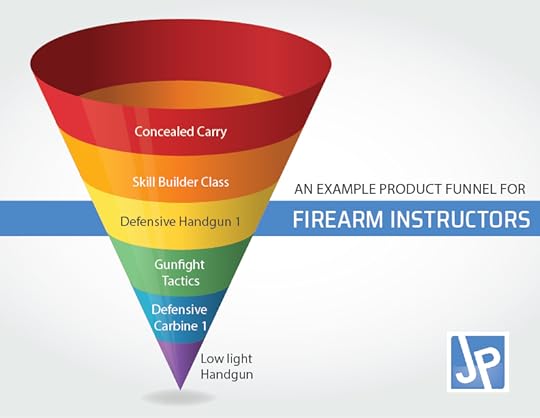
Some firearm instruction businesses are sophisticated enough to have multiple funnels with different entry points and different customer journeys which enable them to target different demographics and consumer groups. Something to think about.
The One Trick Pony ProblemIf that seems overwhelming I understand. In my experience, the majority of firearm instructors are one-trick ponies. They have a single class they teach or offer and that summarizes their business.
In many cases that one class is the state-required concealed carry permit class. If you suffer from this business problem your business is extremely unstable.
First, if the state passes permitless carry your business will shrink and you may be unable to adapt.
Second, you can't afford to spend much in advertising on acquiring a student because you only make money on that single transaction. So competitors with a real product funnel can afford to outspend you in advertising.
Third, you have no strong way to separate yourself from competitors. You may be convinced that you are a better instructor or your PowerPoint deck is more valuable but the potential students in the marketplace don't know the difference and many of them don't care. Having a true product funnel means standing out as a more serious business and one that can provide much more value to the student.
*NOTE: I'm not advocating for teaching skills or classes that are outside of your expertise and experience. Any quality instructor knows they should stay inside their lane but also should be working to expand their expertise and seek out new knowledge and skills themselves.
The Chicken and Egg Problem
Many instructors don't schedule classes because nobody expresses interest but nobody is expressing interest because there isn't a scheduled class to enroll in.
When I talk to instructors about being one-trick ponies they tell me that they have other class options available but they don't schedule them because nobody expresses interest.
Students won't enroll if you don't schedule and post the class. Having a list of class options you COULD teach and letting students know they can contact you if interested is a dysfunctional business plan. It will NOT work out.
For the greater part, you will only sell seats in a class if you provide potential students with a clear description of what the class entails and put it on a calendar to run on a specific date/time.
This leads to a chicken and egg problem where instructors don't schedule classes because nobody is signing up and nobody is signing up because the instructor doesn't schedule the class.
You address this problem by properly building a product funnel and building a baseline for the conversion rate from one product to the next. Also, see the section below about frequency.
Experiment and Automate The Process of Moving Students Through The FunnelOnce you map out your product funnel the next step as a marketer is to work on the process of moving students through the funnel.
Let's look at my example funnel again:

When I say “move” students through the funnel I mean helping them choose to spend more money and buy your next product/class. In this example, you need to figure out the best way to “convert” as many students in your Concealed Carry Class into students in your skill builder class.
That might include specific references and a call to action in the class, follow-up email or SMS, or any number of other activities. That is outside the scope of this article.
The key is to figure out the most efficient way to get the highest percentage of customers to continue their journey from their current place in the funnel forward from each step to each subsequent step.
The Most Difficult Conversion is from 1 to 2Without a doubt, the most difficult challenge is getting students in your top-of-funnel class to come back for class #2. You can probably expect the conversion rate to be at least 1/2 of the rate of students who will move from step 2 to step 3.
This is because once the student comes back a second time you have overcome the attitude that no additional training is needed. The student is converted to the idea of ongoing training and education and you just need to guide them through those steps and provide a quality experience.
So focus your internal marketer (everyone has one) on a process and system most likely to get the first-time student to come back a second time. The rest of the journey should be easier.
For this reason, you may want a few different Step 2 options in your funnel that appeal to different types of students based on their interests or levels of experience. Here is a potential modified funnel based on that strategy:
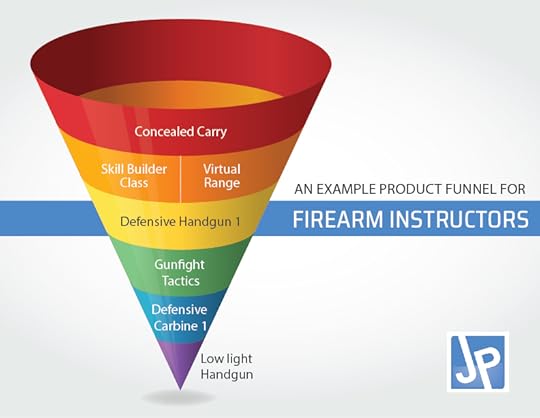
Your top of funnel product becomes the most important product you offer because it determines everything else in your business. It needs to be a product with a great deal of volume in terms of what it provides the students who take the class.
For many firearm instructors, this is the state-mandated Concealed Carry Class because it is the first touchpoint for most gun owners looking for some sort of class. The government effectively drives your customers to you.
In states where a permit is not required to carry OR no training is required to obtain a permit, it is much less likely to be a driving force in your product funnel. You may need to look at a much lower cost / high appeal option.
Here is a potential alternate product funnel that focuses effort on 2 different top-of-funnel classes that appeal to different types of gun owners.
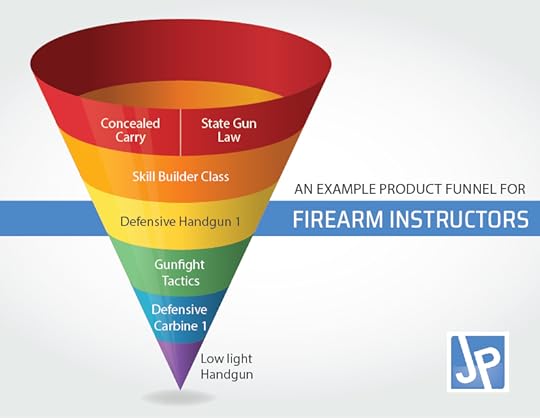
Once you have built out your product funnel and have confidence in your process to move students through the journey at the highest rate possible the only real marketing activities you need to engage in are the activities that support the top of funnel product.
After all, your entire business will succeed now if all you do is add as many students as possible to the top of the funnel. Focus your ad dollars, promotional plans, and marketing generally on driving people into your top-of-funnel product.
Frequency of Class Is Driven By Funnel Position and Conversion RateThe frequency at which you schedule classes is driven by their funnel position and conversion rate. Let's go back to my original example funnel and add example conversion rates.
By conversion rate, I mean the % of students who move from one step in the journey to the next step. (Note here it represents the percentage of the total. Defensive Handgun for example will have 7% of the original Concealed Carry Students enroll which is 70% of the students in the Skill Builder Class)
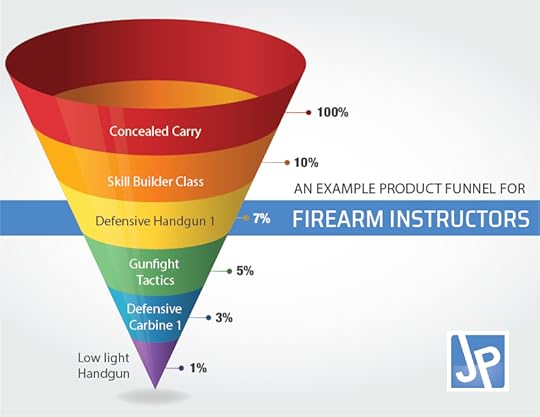
Next, indicate your total max number of students in each class:
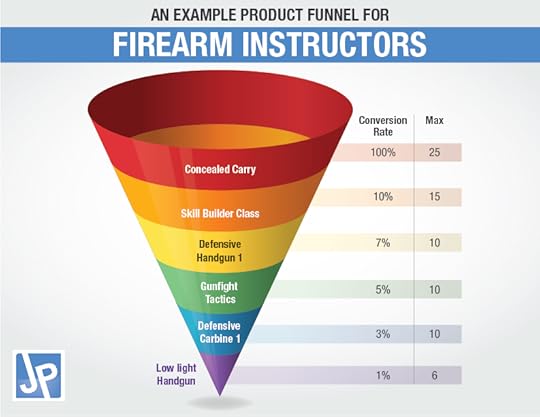
Again a reminder this is an example. In my example the max number of students consistently goes down but that might not necessarily be the case.
Now estimate the number of how many people you will add to your top of funnel class each month. For my example, I'm going to suppose 100 students per month.
Using the conversion rate I can calculate appx how many people, of those 100 will funnel down into each class:
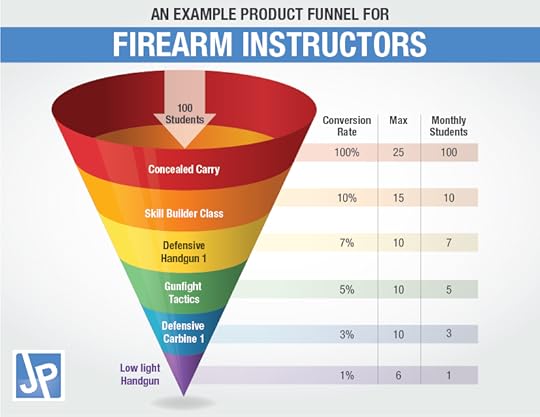
Now using the max number of students per month I can decide how often to teach each class:
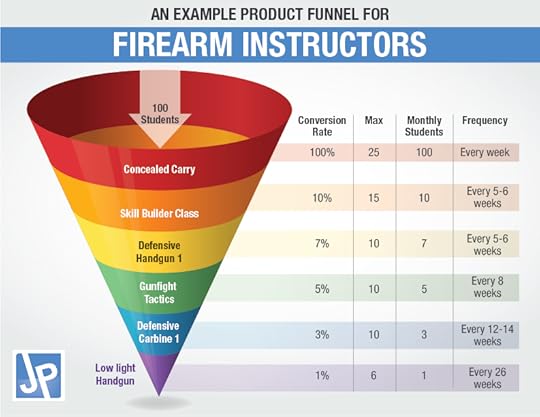
Of course, you can teach any of these classes more often if you want. These estimates are based on having roughly full classes and based on the input of 100 students a month and our estimated conversion rates. A different way to look at your frequency is to consider your MINIMUM students instead of your max students.
How many students at a minimum do you want in a class to proceed?
Scheduling classes more frequently will always have a positive impact on the conversion rate and the number of students you have in each class.
In ConclusionTo grow a strong and stable firearm instruction business you need to focus on building out a customer journey that both empowers and supports the customer's goals while also supporting your business.
Focus on helping customers move through that journey and then focus on driving more customers into the top-of-funnel class.
I welcome your feedback and questions below!
The post A Product Funnel For Firearm Instructors first appeared on Jacob S. Paulsen.com.






August 11, 2021
My Top WordPress Plugins of 2021
WordPress is an ever-changing platform with new developers entering the community all the time. I was just reviewing some older posts here on my site where I recommend WordPress plugins and I realized that many of those are plugins I don't use anymore because something new has come along that is better, or they are no longer relevant, or no longer being developed.
So my intent moving forward will be to publish an annual article (this being the first) to highlight new plugins I've started using in the last year that are worth considering if you use WordPress. In addition, I've created a new Evergreen page where I will maintain an updated list of plugins I LOVE and strongly recommend.
The 2021 Top WordPress Plugins:RankMath

I used All In One SEO forever but have been transitioning my sites to RankMath. I think it is currently the best tool for SEO optimization. A recent update to All In One SEO caused my site to crash. My developer and I were unable to fix it and so I was forced to dump it for an alternative.
My host (also unable to fix the issue) recommended RankMath. I've been very satisfied and plan to move all my sites over to RankMath in the future. It has a very convenient migration tool to pull in all your data from Yoast or All In One SEO so you don't miss a step.
All In One Video Gallery

This paid plugin has been a game-changer. Video is growing in importance across all digital channels and being in control of your own video experience is important. In the firearm industry especially we have to consider that any day YouTube could shut down my channel and destroy what I've built there.
This plugin allows you to build video players and galleries on your site. You do not have to host the videos on your server. You can connect it to a YouTube or Vimeo or self-hosted video hosted elsewhere and just add it to your gallery all the same.
There are also automation options to automatically check any YouTube channel for new content and pull that content in.
I am particularly impressed with the features that allow you to connect it to the most popular ad networks in order to play VAST ads. Think pre-roll and overlay ads.
Easy Table of Contents

This plugin looks like it has been around for awhile but I just discovered it. Rank Math suggested I could improve my SEO score by including a Table of Contents on larger posts that have a lot of sub-headings. This plugin does it automatically.
Much easier than creating anchor links manually in the code to be sure. You can set it to automatically insert into posts based on your criteria or only manually add it to posts you indicate.
Admin Columns

With the number of plugins I use the backend Posts and Pages lists were getting ugly and unwieldy. This plugin allows you to choose what columns you see in those backend tables. This cleans it up and makes those backend pages load faster.
GamiPress

This plugin has been a game-changer. On ConcealedCarry.com this year we rolled out some fun gamification features. Users can earn badges for completed courses or other activities on the website. They can rank up based on the badges earned as well.
Looking for a tool to manage this was ugly. Years ago we had tried to use Badge.os but it looked to me like it hadn't been updated in awhile and their integration with Sensei was no longer supported. So I was lucky to find GamiPress.
GamiPress is so similar to BadgeOS in fact that one ripped off the other almost certainly. GamiPress is open source but many of the addon plugins are sold.
NextMove Lit – Thank You Page for WooCommerce
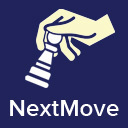
This plugin was recommended to my by the WooFunnels plugins. It allows you to create a customized thank you page for WooCommerce.
Easy to add a coupon or other call to action and all-around provides a more professional look and experience for the customer.
WooCommerce Conditional Shipping and Payments
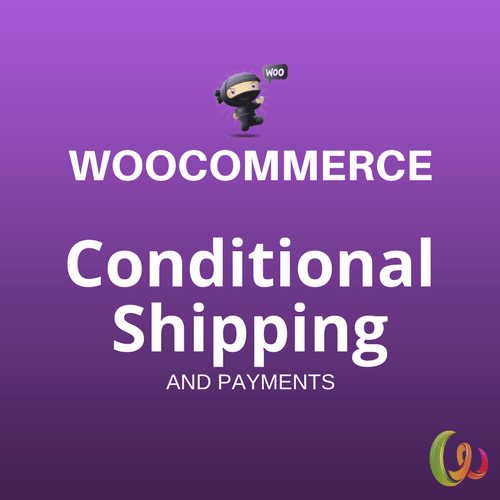
This year PayPal freaked out because we dare to sell dummy ammunition. They don't allow for the sale of ammunition and no number of phone calls or emails helped them understand that dummy rounds are not live ammunition and shouldn't be against their policy.
This plugin allowed me to block PayPal as a payment option when people purchase ammunition. It has a lot of other conditions you can set and in addition to blocking a payment gateway you can also block various shipping classes.
WP Zapier – Yoohoo

There are a lot of Zapier plugins for WooCommerce and WordPress. Most of them are fairly limiting.
I found this one is the most versatile. You can trigger a zap based on various WooCommerce activities but also based on Sensei activity which was important to me.
Forminator Pro

I've been using Contact Form 7 for a very long time. Ever since cForms died. I don't have anything against Contact Form 7 but Forminator Pro is part of my WPMU Dev subscription and it had a few features I was in need of. So I switched one of my websites over and I've been very impressed.
In addition to forms, you can build polls, quizzes, and integrate with Strip and PayPal as a checkout tool.
Custom Order Numbers for WooCommerce

I've never had any issue with the way WooCommerce generated order numbers. I know some people go batty over it because by default WooCommerce doesn't generate sequential order numbers. Just the nature of WordPress and post types and post meta.
Anyway, I found some use for this plugin because I import orders from several WooCommerce websites into a single order fulfillment and inventory system (Zenventory). That system gets super confused if multiple orders have the same order number; which is possible when they are coming from different websites.
So I use this plugin to add a 3 letter prefix to orders coming from each site to prevent that potential conflict.
The post My Top WordPress Plugins of 2021 first appeared on Jacob S. Paulsen.com.






July 22, 2021
Web Hosting and Website Builders for The Firearm Industry
I built my first website in 2006 using Microsoft Frontpage which was at that time on its way out. In 2007 I first learned about the concept of a CMS and built a website using WordPress version 1. Since then I've built and maintained over 100 websites both of my own and of clients. Today I still use WordPress and without question I favor it over other options but today we will discuss website hosting and website builders and specifically address considerations for anyone with a business in the firearm industry.
Do you sometimes feel like this:
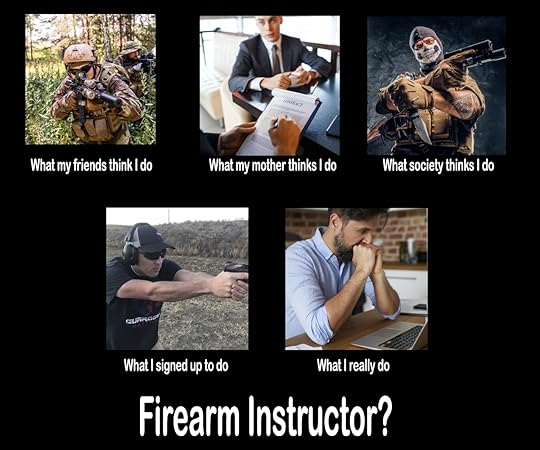
I'll disclaim that what follows is a simple and introductory conversation surrounding the technology involved in hosting a website and taking payments on it. Understanding the details as presented below will allow you to make the most informed decision.
This article is meant both to give generally helpful information that would be helpful to anyone in any industry and then specifically address questions that might be relevant to someone in the firearm industry.
However, if you find it is still overly technical and too much to absorb I recommend you skip down to my personal summary and recommendation and just take it at face value.
Clarifying The VocabularyBefore we can dive into the details it is important that you the reader be on the same page as me the teacher. Please kindly review our vocab words:
Domain Registrar: The company to whom you pay a fee to register and maintain registered your domain name. It may or may not be the same company as your web host.
Web Hosting: The company you pay a regular fee to host the website. They have actual servers somewhere connected to the internet all the time and the actual code, images, files, etc of your website are stored on their servers.
Website Builder or CMS Tool: The software used to build and manage your website. Sometimes the software is provided by the web host but other times it may be 3rd party software you install on your host's server. The most generic term used is web builder but I more often use the term CMS which stands for Content Management System.
3rd Party Backup: A backup of your website's data and files stored somewhere other than your primary web host. Helpful in case something happens to your host or your host outright shuts you down.
Web HostingWeb hosting is the most important and critical subject of this article. The host you choose for your website will have a substantial impact on your overall experience. Your host is the core factor in determining: cost, uptime, site loading speed, and the potential of having your data/account shut down or canceled.
Like most online services you tend to get what you pay for. Popular economic options like Hostmonster, Bluehost, Hostgator, and Godaddy are famous and popular for small businesses because of their low cost and easy to use backend interfaces.
On the flip side Amazon Web Services (AWS), DigitalOcean, and other enterprise solutions specialize in large websites with a lot of web traffic and companies that are established enough to afford an in house server admin who can manage most of the server related setup and issues themselves without relying on customer support from the host.
Web Hosts And The Firearm IndustryAs of this writing, I'm not aware of any web hosts who prohibit firearm-related companies or content. Certainly, there are some who prevent the sale of guns or ammunition. Shopify for example made waves a few years ago when they kicked Franklin Armory off their platform. If you are a FFL and sell firearms and or ammunition you do need to avoid all popular web hosts and seek out a company that explicitly affirms they allow your kind of business. A quick Google search or contacting your NSSF rep will yield several options.
For most of us in the firearm industry who only sell training or accessories choosing to host with a company that specializes in working with FFLs and retailers of guns and ammo is going to be an unnecessary and expensive choice. Instead, you should be able to work with any common or popular host you choose.
Further, it is important that we note hate speech and violent threats aren't tolerated anywhere. In 2020 social media website Parler, and popular online forum AR-15.com both made waves when they were shut down by their web hosts. As the firearm community is prone to do; many companies worried they could be next and perhaps we should all seek a host that is more protective of our freedom of speech.
Please understand that NO web host anywhere tolerates hate speech and violent threats. Both Parler and AR-15.com are open community sites where anyone can set up a user account and post whatever they want. This led to some content that was deemed against the terms of service of those hosts and those websites were shut down.
As a company that operates in a space that is politically sensitive, you need to have measures in place to control your content. Most of us are not social media sites or web forums so the biggest thing you need to worry about is a comment on a blog post. Regardless of your business model be sure to moderate content to a degree you can feel confident will prevent violent threats and hate speech. Doing so should keep you within the terms of service of every popular hosting service I'm aware of.
Regardless of where you host, if you have any fear about your site/account being shut down because of politics or anti-2A sentiments you should invest in a 3rd party backup. If something happens you can also restore your backup to a new and more favorable host.
Website Builder or CMS ToolThe software you use to actually build and manage your site is very important as it becomes the day-to-day touchpoint for you. It is important for you to understand Self-hosted vs Native web builder tools.
Self-hosted VS Native ToolsA self-hosted CMS is a software that can be installed on any web host. The most popular example is WordPress, which today is estimated to be the backend tool of over 60% of all websites worldwide. Joomla, Drupal, Prestashop, Magento are other examples of self-hosted website tools (CMS).
The beautiful thing about self-hosted tools is the ease of changing hosts. If you are hosting your website with Host A but have decided you want to move to Host B that is easily done with a self-hosted tool like WordPress. It can be installed on almost any web host.
Also noteworthy, most of these popular self-hosted CMS tools are free including all those mentioned above.
Self-hosted tools are extremely popular among the more savvy web designers and programmers due to their extreme flexibility. Many, including WordPress are open-source (visible and readable by anyone) which leads to an environment where programmers can easily build add-ons or plugins to expand on the core functionality of the program.
For example, lets imagine that I have a specific functionality I want to build into my website. A custom reciprocity map builder tool for example (wink wink). With WordPress there are any number of freelance developers I could find and hire to build me a plugin (addon) that can be installed on my site and perform that function for my website visitors. On a Native CMS tool that is going to be much more difficult or even impossible depending on the tool.
Native tools are web builders that require you use their hosting service in order to use their tool. Godaddy is an easy example to point out. Godaddy's web builder can only be used if you are hosting your website with Godaddy. Godaddy hosting does allow you to install and use a self-hosted tool like WordPress but naturally they want you to use their web builder as it effectively makes you prisoner to their hosting. If you use the Godaddy native web builder (or any other native web builder) and ever want to leave Godaddy you will have to rebuild your website from scratch.
Other native tools are even more married to their host. Look at Wix, Squarespace, Shopify, and Square as examples. Each of these web builders is also a web host. You cannot use Wix's web builder on any host but Wix, and you cannot use any alternative web builder on Wix the host. In the case of these examples the hosting and the web builder are sold as a package and you cannot break them up.
It is my strong opinion that self-hosted CMS tools are greatly preferable and that WordPress is the best. More on this in my summary at the end of this article.
Web Builders and the Firearm IndustryAt this time I'm not aware of any web builder tools that have blocked firearm-related businesses from using their product. The other real additional insight I might add is that self-hosted tools give you some insulation from those potential problems.
If WordPress for example decided tomorrow it won't work with a company like ConcealedCarry.com (my business) then it lacks the ability to shut down my site. Because their code is open source and lives on a server/host of my choice they lack the ability to turn it off. They could potentially block me from getting future updates to the code but they can't outright shut it down.
eCommerce Tools – Another Layer of ComplicationMost companies have a need to take payments and sell products on their website. Such is the nature of today's society. As such we have to look at eCommerce or shopping cart software and tools as part of the overall consideration when choosing a webhost and especially a CMS.
First we need to understand that different eCommerce solutions function differently. Here I'll give some examples:
Shopify is an eCommerce solution that is part of a the Shopify CMS and hosting product. All three are married together and as far as CMSs go, Shopify is built first and foremost for eCommerce with other website functionalities such as blogging taking a backseat. Wix, Sqaurespace, and other native CRMs and hosting providers also make it easy to add an online store to your website though they are a little less eCommerce focused than Shopify.
Contrast this with Magento and X-Cart which are also really designed for eCommerce first and everything else second but they are self-hosted solutions you can install on any host.
Today the most prevalent eCommerce solution for small to medium-sized businesses is WooCommerce. WooCommerce is estimated to currently be the backend of over 30% of all eCommerce websites in the world. WooCommerce is not a dedicated CMS like Shopify, Magento, and X-Cart. Instead, WooCommerce is actually a plugin for WordPress. WordPress is the CMS and WooCommerce is just an expansion to that.
WooCommerce, Magento, and X-Cart are all free Open Source tools. Shopify, Wix, and Squarespace are all native and married to their host and as such there is no extra cost for eCommerce capabilities as the costs are built into the hosting cost.
Merchant Providers – A Bigger ConversationA common question that could be asked about building a website in the firearm industry would be about merchant providers and gateways. Companies that allow you to accept online payments.
I will be dedicating a future article to this topic so I will keep it brief here.
The only thing worth noting is that whatever CMS you use needs to be compatible with whatever payment gateway or merchant provider you use. Obviously the biggest and most popular companies tend to all have compatibility with each other but if you use something less common you might find it doesn't have native integration with your CMS.
My Personal RecommendationsLong story short here I recommend you use WordPress with WooCommerce. Reasons why include:
WordPress and WooCommerce are free. While you will still have the cost of hosting it is less expensive in my experience than using Native builders that are packaged with hosting.You can use ANY web host you want. If you are ever not happy with your hosting provider just move your site to a different host. No need to rebuild your site from scratch. If you have concerns about the future decisions that a company might make relative to gun-related questions this is probably a critical point.Versatility and Customization are easier, cheaper, and more available with WordPress and WooCommerce than any other alternative period. Whatever you want your site and store to do that functionality has probably already been built for WordPress and if it hasn't it will be easy and low cost to find a competent developer to build it for you.WordPress may not be the easiest to use but it is easy when you get used to it and because of it's immense popularity you can figure out how to do anything with a quick Google search. There are an endless number of websites and YouTube channels dedicated to teaching people how to use WordPress more so than any alternative platform.Many people tell me they tried WordPress but felt it was too difficult to use. They find tools like Wix, which is basically a “drag and drop” builder easier to use in making their website look how they want it to look. There is some truth to that. To that end, however, I have 2 suggestions.
WordPress sites are built around a theme (WordPress lingo for template). You save yourself a lot of pain by looking for and installing a theme that gets your site laid out how you want it. As of this writing, there are about 1 billion WordPress themes out there (ok I made up the number but its probably a decently accurate estimate)Installing either Elementor or Beaver Builder on your site will bring you the “drag and drop” type functionality you may be looking for. These 2 competing WordPress plugins make WordPress even easier to use.As to the web host I think my recommendation would change based on your budget, the amount of traffic you anticipate getting to your website, and how much you think you will need help from the host's customer service team. Here are some suggestions:
Hostmonster, BlueHost, Hostgator, and Godaddy: These are the low-cost mass use options on the market. They are big enough and well enough established that they provide pretty good service but make no mistake this is the equivalent of buying a used laptop. It will get the job done and won't cost you much but don't expect awesome performance. Expect to pay about $100 a year to start.Amazon (AWS) and DigitalOcean: These are enterprise solutions. Setup is going to be more difficult but scale is their game so if you are worried about load speed and getting massive amounts of traffic these guys can handle that and do it without jeopardizing your performance. In terms of cost they are going to be the least expensive option for larger higher traffic websites. The downside is complicated setup and management and a lack of hand-holding type customer service. They expect their customers to have in-house people with the expertise to manage things.BigScoots and WPEngine. These are hosts that specialize in WordPress stuff specifically and while they are going to cost more than the above 2 options they are the perfect combination of performance AND hand-holding style customer service. They will ensure good performance but they are available to help you with minor or simple questions.If you have additional questions you feel I didn't adequately address please add them in the comments below!
The post Web Hosting and Website Builders for The Firearm Industry first appeared on Jacob S. Paulsen.com.






July 13, 2021
The Ultimate Beginners Guide to Affiliate Marketing
While these principles will apply to any industry and any business the specific examples given are relevant to the firearm industry.
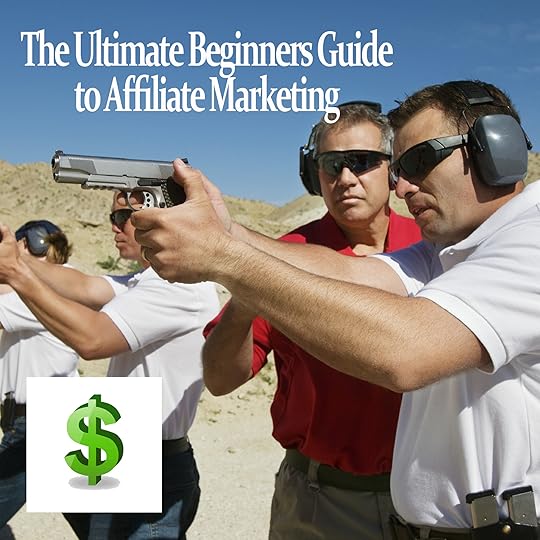
Anyone who provides a service or product to a customer can benefit from affiliate marketing. You might be an online content creator leveraging blogging, YouTube, or Instagram. Perhaps you are a service provider who teaches classes, visits clients in their homes, or has some other direct connection with the customer.
Regardless, you know that the only way to increase revenue is to get more customers and to get more money from each customer. Affiliate marketing is primarily a tool to increase revenue per customer but doing so indirectly supports getting more customers as your ability to pay more to acquire a customer increases.
What is Affiliate MarketingAffiliate Marketing is the effort of promoting offers, products, and services from other companies in exchange for a commission when you refer a sale or lead. Think of an affiliate program as a digital online equivalent of a traditional referral program.
A company that sells a product or service can choose to offer an affiliate program. Some do, but many do not.
Some businesses exclusively rely on affiliate revenue as their only source of revenue. For other companies, it becomes a supplement to other revenue.
For example, in the firearm industry, a lot of affiliates primarily earn their money as firearm instructors or as content creators on YouTube or a major blog or website.
Expectations & The NumbersI think one of the biggest challenges in Affiliate Marketing is that a lot of people approach it with poor and incorrect expectations about how much revenue it can generate.
Let's begin by exploring some numbers. For the purpose of this example, let's assume that you the affiliate have an email list of 100,000 people. If you prefer you can think of it as a Facebook page followed by 100k people or the total number of students you see over the course of the year, etc.
If you email an affiliate offer to 100,000 people you obviously can't expect that all 100,000 will open the email right?
A good open rate for an email list of that size would be 20%. 20% of 100k is 20,000 people.
So 20,000 people open the email. You don't expect all 20,000 to click the link to take a closer look at the offer/product right?
A good click-through rate for email would be 5%. 5% of 20,000 is 1,000 clickers.
If 1000 people go to the product/offer page you don't expect all 1,000 to purchase the product do you?
A good “conversion rate” would be about 5%. 5% of 1000 is 50 buyers.
So in this example, you started with an email list of 100,000 people, and even with the best of open rates, click-through rates, and conversion rates ended up with only 50 customers. Averages would be much lower.
Most people getting started in affiliate marketing don't have an email list of 100,000 people. Most don't have a YouTube channel with 100,000 subscribers or a Facebook page with 100,000 likes, or a regular audience of 100,000 people anywhere.
Does that mean it isn't worth investing time and energy into affiliate marketing?
No, it doesn't mean that. Affiliate marketing is absolutely a good idea for anyone but understanding these expectations in terms of open/visibility rates, click-through rates, and conversion rates will serve to both keep your expectations in check while also incentivizing you to grow your audience.
At the core of affiliate marketing is consistent promotion balanced with audience growth activities.
The Concept of ROI and ScaleImagine the following example:
Marketer A spends 30 minutes each week putting together an email to send to his email list of 3000 people.
Marketer B spends 30 minutes each week putting together an email to send to his email list of 300,000 people.
Which marketer invested more time? Which marketer will see a greater ROI from his time spent?
Both spent the same amount of time each week putting together and sending an email with an affiliate offer/link. The marketer with a larger audience just makes more money from the same effort.
There are a few lessons to learn from my example.
1: Consistency matters. If you never take any action until you have a large audience you will never have a large engaged audience. This is a chicken and egg game and the marketer who is willing to invest the time to engage the audience even when the audience is small is going to reap the rewards as the audience grows. So in the case of email that means start sending email to your email list even if the list is small. It may feel like a poor use of time but over time you will be glad you established that relationship with the audience as the audience grows and your ROI from the same amount of effort increases.
2: Affiliate marketing is a long-term strategy, not a quick way to make extra money. That doesn't mean you aren't going to make any money until your audience is huge. It just means you have to be invested in doing the right activities consistently over time so you can watch the ROI grow without changing your activity level.
The Best Audiences are Live and Then SubscriptionsAs you have learned from above, your ROI in affiliate marketing is going to be greatly influenced by the size of your audience. If then you are wondering where best to build that audience (blog, email, SMS, events, Facebook, YouTube, Instagram, etc) that is the next thing we are going to explore.
The best audience is a live audience. When you are looking at someone in the face and tell them you really like a product and that they really need it and you can potentially hold up said product and demonstrate it; that is going to be the highest conversion rate of any audience you can build. This is why Webinars are so heavily utilized in marketing.
The challenge with live audiences is they are limited in scale.
If for example, you are a firearm instructor, you aren't likely to see more than 2500 students a year. That would be a solid firearm instruction business but even after 10 years you have only seen 25,000 students. That is respectable but even with the increased engagement and conversion rates, you can't only drive so much volume doing that.
The other challenge with Live audiences is your tendency to only see that customer once or on an infrequent frequency. So even if you build scale and saw 10,000 students a year you probably only see most of them once for 4-8 hours and you can only effectively drive so many offers in that limited amount of time.
The next best place to build an audience is anywhere that the potential customer can be subscribed to your messaging.
An email list for example is a subscription because when you send the email the customer gets notified. It shows up in their inbox.
SMS (text messaging) is also a subscription since when you send the message the customer is notified.
Some tools can be subscribed but aren't by default. For example, a follower/liker of your Facebook page or a subscriber to your YouTube channel will not automatically be notified when you publish new content but they can opt to be notified if they want. Then, those subscribers who turn on notifications become part of that true subscription-based audience that is most valuable.
Email marketing tends to be the major focus for most marketers because email is very inexpensive to send (compared to SMS for example) and the user is notified when the message is delivered. Everyone knows how to use email and the technology is readily available.
In addition to the audiences described above, there is also an opportunity to leverage the traffic to your website by utilizing banner ads that link to affiliate offers or including links in your blog posts and editorial that link to affiliate offers.
Banners have a notoriously low click-through rate but you have little to lose by adding one to existing white space that otherwise serves no function.
Headlines & Ad Copy Drive The RatesOne key to success in affiliate marketing is writing good ad copy. The quality of the copy used in the email, Facebook post, YouTube video, blog post, etc has a direct impact on the number of people who engage with the message, click-through to the sales page, and purchase.
Similarly, the headline has the same kind of impact. In an email the headline is the subject line, on YouTube, it is the title of the video, and on your blog, it is the title of the blog post. This single factor is the greatest leverage point you have in driving higher ROI.
In the case of an email, if you can increase the open rate then by extension you have a very strong impact on the number of people who click and the number of people who end up buying.
Many companies may provide their affiliate with pre-tested headlines and ad copy that you can copy/paste and use. These are often referred to as “swipe.” Most smaller companies do not provide tested and proven email/ad copy and they leave it up to their affiliates to develop those assets on their own.
Promote What You Believe InThe headline here says it all right? Do not promote products that you yourself wouldn't use just because you can make a few bucks.
Your lack of enthusiasm about the product or service itself will lead to either lame ad copy or disingenuous copy.
And remember there is something unethical about telling other people to buy a product you don't feel is good enough for you to use.
Affiliate marketing is in many ways an endorsement of a product or service. Be careful what you endorse.
Following Up From Transaction or Service PerformedOne of the best ways to automate a stream of affiliate revenue is to build an automated sequence of emails to follow up with customers.
A customer is most primed to buy something new from you or someone that you recommend immediately after they consume or receive your product or service.
Firearm instructors for example leave a lot of revenue on the table when they fail to send automated emails to their students immediately following the class.
Map out a series of emails that would be ideal to send to your new customers and use those emails both to drive a stronger relationship, provide more valuable content, make suggestions about their next steps, and recommend products they can benefit from.
Affiliate Programs and How to Find ThemNow as you decide to move forward and increase your affiliate marketing efforts you need to find good affiliate programs that will compensate you for referring customers. Here are some places to find those programs and opportunities:
1: Your favorite products and vendors. You are already going to tell your customers about your favorite products right? Might as well make some money doing it. Contact those vendors and express an interest in joining their affiliate program if they have one.
If they don't have one they may be incentivized to create one if they receive a lot of requests.
2: Affiliate Networks. There are a number of 3rd party companies that work with thousands of vendors to manage their affiliate programs. By joining one of those networks you may quickly get access to a large number of vendors in one place. For example in the firearms industry, AvantLink.com has done a good job of forging relationships with many firearm-related retailers. As of this writing, AvantLink manages the affiliate programs for Brownells, Guns.com, Palmetto State Armory, Safariland, Sportsman's Warehouse, and many others.
Other affiliate networks include CJ.com and ShareASale.com.
3: Large eCommerce players in your industry. In the firearm industry for example this would be companies like Sportsman's Warehouse, Brownells, and in my humble opinion, ConcealedCarry.com.
These companies may offer a large number of products that you otherwise would not be able to promote as an affiliate but all in one place.
4: Amazon. Amazon as the largest online retailer in the country is a great fallback affiliate option. Their affiliate program is horrible in terms of the commission levels but if you want to promote a product and there is no affiliate program anywhere else that will pay you for promoting it Amazon is a good last resort.
Understanding Cookies and Affiliate Tracking TechnologyNot all affiliate programs are equal and knowing which ones are best and that you would most like to work with starts with understanding, at least at a basic level, how the technology behind affiliate programs works.
As an affiliate, you will be provided with an affiliate link. This link includes some sort of parameter (string of letters and/or numbers) that identifies you as the referring affiliate. When someone clicks on that link they are directed to the vendor's website and a web cookie is installed on their browser.
The web cookie is just a piece of code that the vendor's website will reference to identify that this user was referred by you the affiliate. Purchases made by the user while the cookie is present will be attributed back to you the affiliate.
How about an example?
You are an affiliate of MountainManMedical.com. You share your affiliate link on your Facebook page to the Yellowstone Trauma Kit.
Someone clicks on your link and is redirected to MountainManMedical.com's Yellowstone kit product page. When the potential customer lands on the site, MountainManMedical places a snippet of code called a cookie into the browser that the user is using.
Now if that customer makes any purchase on MountainManMedical (of any product) the cookie will cause MountainManMedical to identify that the customer was referred by you and track and give you a referral commission for that purchase.
Cookies generally have an expiration date. Different affiliate programs have different lengths of time that the cookie stays in place and the longer it stays the better for the affiliate. In our above example imagine that the user doesn't purchase anything on their first visit. Instead, a few weeks go by and they decide they are ready to buy a Trauma kit. They go directly to MountainManMedical.com and buy the kit.
Even though on this particular visit to the website they did NOT come via your affiliate link you will still get credit because the cookie is still in their browser identifying you as the referring affiliate.
So the first thing I'm interested in knowing is how long do cookies last for any given affiliate program. 14 days is fairly standard. 30 days is on the longer end of what I generally see. 3 days is horrible and makes me think the vendor doesn't like their affiliates very much.
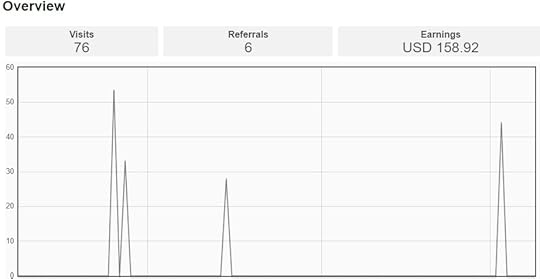
Affiliate reporting could be its own very long article so I'll just add that the more reporting the affiliate software provides you the better. You want to be able to track clicks and referrals but also ideally different campaigns. For example, if you get a referral did it come from the email you sent, the link you put on your Facebook page, or that banner ad you run on your blog? That level of detail isn't a make/break thing but it is nice for a more sophisticated affiliate marketer.
Shortening and Branding LinksMost affiliate links are really ugly. They are long and have sometimes random combinations of numbers and letters.
Of course, that generally doesn't matter in online contexts. In an email for example it doesn't matter how long or how ugly the link is when you hyperlink a set of words in the email.
However, when you share an affiliate link on a piece of printed marketing material, in a lesson or class, or in a podcast or video you need a link that people can understand and write down quickly without pain.
Option 1: Traditional link shortening tools like Bit.ly or tiny.url exists to help with this. You can take your affiliate link and use bit.ly to create a new shortened version of that link. Something like, bit.ly/jacobfavholster, etc. This is certainly better than long ugly links.
Option 2: A branded link. A branded link is a link from your own website that redirects to whatever other link you want. For example, I can create jacobspaulsen.com/amazon and have that redirect to my Amazon affiliate link. This gives me something that is clean, professional, and easy to give to my audience.
Created these branded links is going to vary in the process depending on your website builder and tools. I use WordPress and the Pretty Links plugin makes this really easy.
The Good Ole' Coupon CodeBeware the vendor who, when you ask if they have an affiliate program, they tell you they do and they just set you up a coupon code and that is how they track your referrals. Affiliate software doesn't work that way. That vendor is too lazy or too clueless to figure out how to setup real affiliate software to track your referrals.
Instead, they are committing to manually performing a search on a regular basis to find orders that include your coupon code and then pay you for them.
There are a few major concerns I have with this model:
1: No transparency. I don't have any reporting. Whatever they tell me I earned I guess I just have to believe them.
2: No performance tracking. Without having access to any data I have no idea what I did when that drove the sale. Hard to grow and scale what is working if I don't know what is working.
3: Human error. Even with the best intentions, they could just fail to check for my coupon code or fail to search properly or any number of other potential failures.
4: Customer error. The customer might buy based on your recommendation but fail to input the coupon code. It happens WAY MORE OFTEN than you think.
Now, if you so desperately want to provide the value of a discount to your customers that can be done without all those downsides mentioned above. First, the vendor needs to have a real affiliate platform. Software that generates an affiliate link that when used will be tracked and reported.
Then the coupon code just becomes another incentive you can give your customers but it isn't alone the means by which the sales are going to be tracked.
Here is how I recommend you manage this situation in which I have an affiliate link I want my audience to click on to ensure I get credit but I also have a coupon code I encourage them to use in order to claim a discount.
Step 1: Build a landing page on your website (or on the vendor's website if they are willing). On that landing page but a big button that says “SHOP NOW” (or similar) and links to your affiliate link. On that landing page also provide the coupon code with instructions that “to claim your discount click on the above button to go to the vendor's website and then add code “couponcode” to checkout.
Step 2: Don't give out the coupon code ever. The only way someone should ever get that code is by going to your landing page.
Step 3: When sharing this offer give users the link to your landing page ONLY.
ConclusionAffiliate marketing is a great way to augment your revenue. Manage your expectations and focus on building your audience. Be consistent about promoting quality offers you believe in.
The post The Ultimate Beginners Guide to Affiliate Marketing first appeared on Jacob S. Paulsen.com.





July 1, 2021
Off Duty On Duty Podcast: Don’t Get Shot By the Police Revisited
An interview I gave for a podcast talking about training and strategies to prevent an armed, non-LEO responder from being shot by responding police officers.
The post Off Duty On Duty Podcast: Don’t Get Shot By the Police Revisited first appeared on Jacob S. Paulsen.com.








